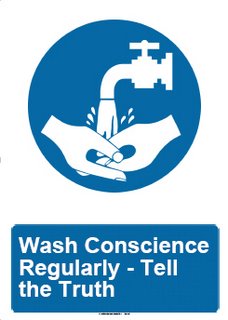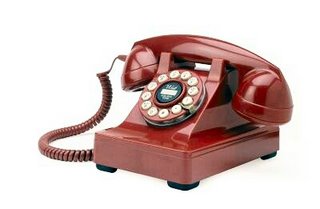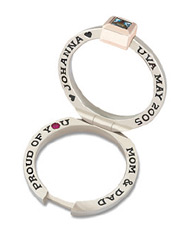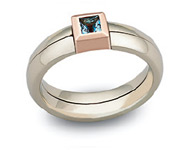 You may enjoy this site at which you can create official-looking regulatory signs with your own messages at Online Signs. No log-in required. I saw this posted at Ready Made and thought it was worth passing along.
You may enjoy this site at which you can create official-looking regulatory signs with your own messages at Online Signs. No log-in required. I saw this posted at Ready Made and thought it was worth passing along.
 You may enjoy this site at which you can create official-looking regulatory signs with your own messages at Online Signs. No log-in required. I saw this posted at Ready Made and thought it was worth passing along.
You may enjoy this site at which you can create official-looking regulatory signs with your own messages at Online Signs. No log-in required. I saw this posted at Ready Made and thought it was worth passing along.
Jennifer B. Davis
Have you ever watched that show called "Pretender" where each week Jarod, the main character, who was some "raised in a bubble" genius, takes on a persona and new career in an effort to help others. I always wondered how he pulled it off. After all, how could he be a psychologist one week and a geologist the next and not have people catch on that he was faking it?
There was a great blog entry by Michael Bungay Stanier, a Canadian coach and author, that reminded me of this today. The point he was making is that we can actually be more powerful and more capable than we are by employing some techniques of acting more capable and powerful than we feel. He had some excellent ideas and techniques to employ.
So, with the Pretender and Stanier's techniques in mind, here is a little experiment for you to run in your own life or career. I am very interested to know how it turns out.
1. Decide on a character that demonstrates the kind of vibe that you'd like to embody. It could be a historical figure or a fictional character. It should be someone that enough has been written about or that you can learn about to get to know their style and "observe" their behaviors.
2. Write down three things you like about this character that you'd like to embody. Post these prominently in your home or office. Remember you don't have to emulate everything about this person, just those characteristics you like.
3. Take the time to notice some physical thing that this character does/did that embodies an admired characteristic. For instance, if you like Jarod's intensity, note how he looked people in the eye and didn't say much. If you admire, Buzz Lightyear's bravo, notice how he stands up straight and speaks in a definitive tone. How does the person stand, sit, talk, work, organize their thoughts, learn new things, ask for help, work a room, etc?
4. Next time you are in a situation where you want to embody those admired characteristic, think about your character and emulate the physical action or attitude you observed and see what happens.
Remember, this is all within the boundaries of good ethics, honesty, and respect for others. If you are not qualified/trained/certified, don't offer to perform brain surgery or to do electrical work, please.
By changing your behavior, your language, your posture, and most of all, your attitude, can you change your circumstances? That is the question. If we have any influence over our circumstances, I would say "yes." The key is then deciding who you want to be and realizing that you don't have to wait to act like the person you admire
There was a great blog entry by Michael Bungay Stanier, a Canadian coach and author, that reminded me of this today. The point he was making is that we can actually be more powerful and more capable than we are by employing some techniques of acting more capable and powerful than we feel. He had some excellent ideas and techniques to employ.
So, with the Pretender and Stanier's techniques in mind, here is a little experiment for you to run in your own life or career. I am very interested to know how it turns out.
1. Decide on a character that demonstrates the kind of vibe that you'd like to embody. It could be a historical figure or a fictional character. It should be someone that enough has been written about or that you can learn about to get to know their style and "observe" their behaviors.
2. Write down three things you like about this character that you'd like to embody. Post these prominently in your home or office. Remember you don't have to emulate everything about this person, just those characteristics you like.
3. Take the time to notice some physical thing that this character does/did that embodies an admired characteristic. For instance, if you like Jarod's intensity, note how he looked people in the eye and didn't say much. If you admire, Buzz Lightyear's bravo, notice how he stands up straight and speaks in a definitive tone. How does the person stand, sit, talk, work, organize their thoughts, learn new things, ask for help, work a room, etc?
4. Next time you are in a situation where you want to embody those admired characteristic, think about your character and emulate the physical action or attitude you observed and see what happens.
Remember, this is all within the boundaries of good ethics, honesty, and respect for others. If you are not qualified/trained/certified, don't offer to perform brain surgery or to do electrical work, please.
By changing your behavior, your language, your posture, and most of all, your attitude, can you change your circumstances? That is the question. If we have any influence over our circumstances, I would say "yes." The key is then deciding who you want to be and realizing that you don't have to wait to act like the person you admire
Jennifer B. Davis
 I used to think I was the only one with this problem, but during a recently conversation with some friends, I found out I am not alone. This has prompted me to confess: I hate voice mail. In fact, I really don't like talking on the phone at all. There I have said it. I am email person.
I used to think I was the only one with this problem, but during a recently conversation with some friends, I found out I am not alone. This has prompted me to confess: I hate voice mail. In fact, I really don't like talking on the phone at all. There I have said it. I am email person.Blame it on working for a software company early in my career (in my formative professional years) or because I always feel like I am interupting something when I call people. In any case, I would much rather exchange email then play phone mail tag. I would much rather drop someone a note, then give them a call and risk them not being home, not being available to chat, in short wasting their time (or mine).
Once I sat across from a colleague who was also an emailer. Even though we worked only a few yards from each other, we found that it was often more convenient to email. It allowed us to communicate asynchronistically (like when one of us was in a meeting), allowed us to copy others into the thread that weren't within earshot of our actual conversations, and allows us to include references like links and graphics that would have been hard in a face-to-face conversation.
So, I heard something advertised today that just might be the perfect tool for someone like me. It is calld Simulscribe and it converts your voice mail messages to text messages and emails them to you (or SMS to your cell phone, if you callers doing ramble). Has anyone used this or other tools of this sort? I am wondering how long it will be before one of the "phone companys" that are also into hand-held or data services offer a phone plan that isn't a phone plan at all: it is just voice-to-text message services.
Now, I understand that many of my close friends are phone people. I like them. I admire their commitment to building relationships, resolving conflict, and reaching out. I know that email isn't an appropriate medium for lots of messages (ie, "we should start seeing other people," "You're Fired," and "the lump looks suspicious" come to mind), but for 90% of things you want to say, email works fantastic!
There are whole industries that have not recognized or served people like me. The medical profession for one. I can not go online to book an appointment with my doctor or dentist. They don't confirm or reschedule via email. They won't answer routine questions via email. The same for the hair salon. As if it wasn't inconvenient enough to go to these places, they make it even more so by not letting "non-phone" people make appointments or find out your stylist's hair gel recommendation. I hope some of these folks are reading and can see that they have an underserved population (that is growing, I suspect) that could be effectively targeted with a few services that don't rely on the phone.
If they can figure that out, perhaps someone can also invent a dynamic voice mail recordings that connect to your Outlook calendar to provide daily personalization to your message: "Hello, you have reached Jennifer Davis. It is Monday, August 30th and I am in the office..." It always bugged me that I had to enter conflicts on my calendar and then record a duplicate message on my phone. But then again, I am not a phone person.
Jennifer B. Davis
A story was retold on David Maister's blog today which is very true and very relevant to many things I have been working on recently. It was told to him by Francis Sheridan.
"About ten years ago, while a manager for Washington State, I took a week's class from a person considered, at the time, maybe the most talented and accomplished person in Washington State government, Dick Thomas. He'd been Chief of Staff for the Governor, house majority leader, president of Evergreen State College, etc., and a very cool guy to boot. When I took that class, he said two things over and over.
Long after the class ended, I finally began to understand the wisdom of these two simple thoughts:
1. Policy is what happens.
2. Peoples' feelings about the process largely determine their feelings about the outcome of the process."
Sometimes we can fool ourselves into thinking that great policy is synonymous with a deliberate culture or that documented processes lead to good results. My experience echoes that above: good people doing good things leads to good results. If the results are measured and celebrated, the culture adjusts to reinforce the behaviors that lead to the good results. Sometimes by the time you have processes and policies documented, the business environment has changed and the good people on your staff have made the necessary adjustments. Then, the documentation, coordination, and training begins again. The official action of policies and processes follows the intention and the engagement. Not the other way around.
"About ten years ago, while a manager for Washington State, I took a week's class from a person considered, at the time, maybe the most talented and accomplished person in Washington State government, Dick Thomas. He'd been Chief of Staff for the Governor, house majority leader, president of Evergreen State College, etc., and a very cool guy to boot. When I took that class, he said two things over and over.
Long after the class ended, I finally began to understand the wisdom of these two simple thoughts:
1. Policy is what happens.
2. Peoples' feelings about the process largely determine their feelings about the outcome of the process."
Sometimes we can fool ourselves into thinking that great policy is synonymous with a deliberate culture or that documented processes lead to good results. My experience echoes that above: good people doing good things leads to good results. If the results are measured and celebrated, the culture adjusts to reinforce the behaviors that lead to the good results. Sometimes by the time you have processes and policies documented, the business environment has changed and the good people on your staff have made the necessary adjustments. Then, the documentation, coordination, and training begins again. The official action of policies and processes follows the intention and the engagement. Not the other way around.
Jennifer B. Davis
Have you ever wished you could draw, sketching your own likeness on letters, book covers, or the like? Well, it has never been easier!
Design-Her Gals lets you customize the look of a "paper doll" choosing your body type, hair style, coloring, outfit and accessories. Then, you can print your likeness on a variety of stationary items, stickers, t-shirts, etc. A portion of the proceeds goings toward stage 4 cancer patients. It was fun to play, if nothing else.

If you aren't a "gal" or if sketches aren't your style, you can always try the Mini-Mizer and picture yourself as a plastic lego character. The link to the kid-safe version (you can only imagine what the alternatives might be).
Design-Her Gals lets you customize the look of a "paper doll" choosing your body type, hair style, coloring, outfit and accessories. Then, you can print your likeness on a variety of stationary items, stickers, t-shirts, etc. A portion of the proceeds goings toward stage 4 cancer patients. It was fun to play, if nothing else.

If you aren't a "gal" or if sketches aren't your style, you can always try the Mini-Mizer and picture yourself as a plastic lego character. The link to the kid-safe version (you can only imagine what the alternatives might be).
Jennifer B. Davis

 I ran across an ad for a beautiful product tonight and I couldn't resist playing with their interactive website. Takohl makes rings that hinge open to reveal custom messages or gemstone settings.
I ran across an ad for a beautiful product tonight and I couldn't resist playing with their interactive website. Takohl makes rings that hinge open to reveal custom messages or gemstone settings.They are beautiful designs (at least from the pictures) and fit that category of products that I love: mass customized! Jewelry is a natural for this kind of production, because of the "crafted" nature of the products. However, you don't see a lot of mass customization options, despite the growing number of online retailers (ie, BlueNile, The Pearl Outlet, etc). The only example I could think of, besides truly custom boutique shops, was John Christian (the guy who advertises in the airline magazines). This seems to be a great opportunity for differentiation.
I wonder what other product categories could benefit from a mass customization approach. Fine art, perhaps? Check out Little Masters by Rebecca Hull for an example of this. Clothing design? Fabric or wallpaper patterns?
And, who can forget the NikeID program for customized sneakers and watches or custom-printed M&Ms just in time for holiday parties.



